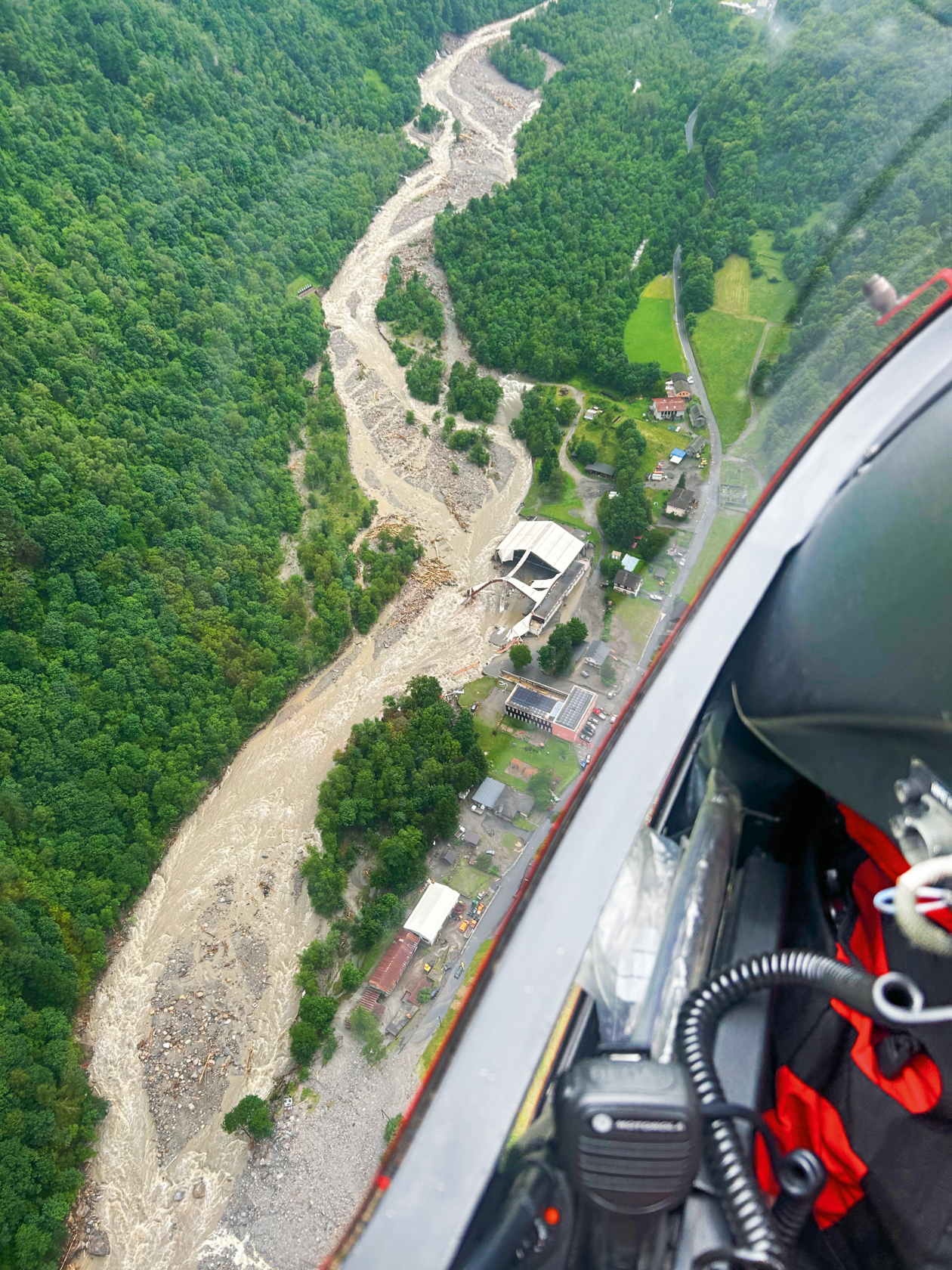Evacuated with the rescue hoist
When the crew of Rega 6 arrive at the incident scene with a helicopter rescue specialist on board, they encounter a surreal landscape: here and there, a house or car can be seen protruding from between huge piles of rocks, boulders, tree trunks and mud. On the balcony of a house surrounded by rubble, six people are waving to the rescue helicopter in order to attract the crew’s attention.
The Rega crew precisely set the helicopter rescue specialist down on the balcony with the rescue hoist and airlift the six people, all of them uninjured, to safety. However, Rega’s assistance is still needed. Therefore, the crew discuss the further course of action with the police, who in the meantime have searched all the houses and apartments for any injured or trapped inhabitants. The Rega crew return to the base to refuel the helicopter. Back in Lostallo again, they fly out more people who are cut off from the outside world due to the flooding. In just over two hours, Rega evacuates 22 people: six in Sorte and 16 in three other districts of Lostallo. These are cared for by paramedics from the Graubünden and Ticino rescue services in a temporary medical outpost. Despite an extensive search, four people remain missing.
Woman freed from rubble and evacuated
In the meantime, in Sorte, ground-based rescue teams, search dogs with their handlers and a Swiss Air Force Super Puma are also carrying out a joint search for further missing persons. On Saturday morning, shortly after 5 am, the Rega Operations Center at Zurich Airport receives a call for help via the Rega app. The flight coordinator immediately mobilises the mountain rescuers from the Swiss Alpine Club SAC. An elderly woman is trapped under the rubble of a house; she is successfully rescued at around 6 o’clock in the morning.
The search continues with the help of the army, which is equipped with thermal imaging cameras and GPS location devices. But the longer the search lasts, the more the hope of finding the three other missing people alive dwindles. It later transpires that the floods in Sorte had cost these three people their lives.





